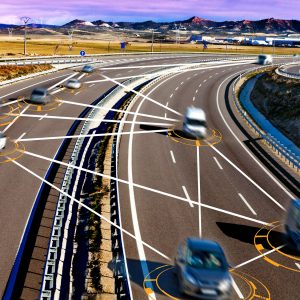Digital Transportation

Digital Transportation refers to advanced applications which aim to provide innovative services relating to different modes of transport and traffic management. It can refer to several transportation scenarios: in traditional road-based transport systems, it can refer to the application of information and communication technologies to road infrastructures, vehicles and users in order to improve their safety and facilitate the transition toward an incoming future populated by Connected and Automated Vehicles. In flight-based transport systems, it can refer to connectivity solutions enabling advanced infotainment systems on board, or high-speed and low-latency pre-processed video streams from unmanned vehicles (e.g. drones).
FBK CREATE-NET focus within this application domain is on communication systems for connected and autonomous vehicles and aircraft communication.
A set of realistic Use Cases developed in collaboration with some of our partners are described in the following:
- Connected vehicles. Security, advanced management of emergencies, traffic sustainability, environment protection aspects: there are many challenges that await to be faced thanks to the most innovative technologies that will allow cars to be connected to each other and to land structures for a better management of vehicle traffic. The key factor will be the 5G technology that will allow the current mobile radio network to evolve in order to obtain a better response to the needs of services in terms of speed of data exchanged and response times of the network infrastructure for the implementation of next-generation connected, cooperative and automated vehicles. For more information about this use case please refer to WiN Unit.
- Aircrafts indoor communication. Current solution for in flight entertainment systems rely on obsolete and hard to upgrade solutions. At the same time airlines want to provide passenger with the same digital experience they are having at home. This includes seamless WiFi and Cellular connectivity, high resolution video streaming from popular platforms, and the possibility to use personal entertainment devices like smartphone and tablets to access the in flight entertainment system. At the same time airlines want to reward customer loyalty bit providing business class passengers with dedicated resources for an improved quality of experience. For more information about this use case please refer to WiN Unit.